Prairie Potholes
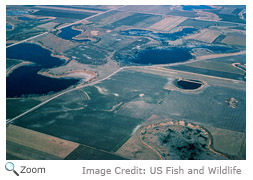 When the last ice age ended and the glaciers retreated about 12,000 years ago, they left behind millions of depressions in the ground in the north central United States and parts of Canada. When the last ice age ended and the glaciers retreated about 12,000 years ago, they left behind millions of depressions in the ground in the north central United States and parts of Canada.
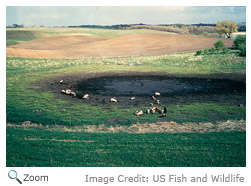 The depressions are all different shapes and sizes. These depressions fill up with water when it rains and when the snow melts. Since most of them are in the prairies and they're often round like a pot, they are called prairie potholes. Some of them are temporary; others are permanent, depending on their size and amount of rainfall. The depressions are all different shapes and sizes. These depressions fill up with water when it rains and when the snow melts. Since most of them are in the prairies and they're often round like a pot, they are called prairie potholes. Some of them are temporary; others are permanent, depending on their size and amount of rainfall.
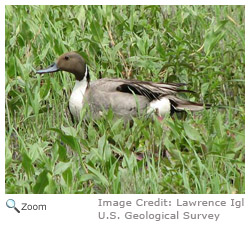 Bulrushes, sedges and cattails grow on the edges and make great hiding and nesting places for birds and other animals. Over half of the migratory waterfowl in North America depend on prairie potholes for their survival and reproduction. Prairie potholes often absorb water that would otherwise flood inhabited areas. They also absorb sediment and nutrients that could harm rivers and streams. Prairie potholes are also sometimes called sloughs. They can be found in Montana, North and South Dakota, Iowa, Minnesota and the Canadian prairies. Bulrushes, sedges and cattails grow on the edges and make great hiding and nesting places for birds and other animals. Over half of the migratory waterfowl in North America depend on prairie potholes for their survival and reproduction. Prairie potholes often absorb water that would otherwise flood inhabited areas. They also absorb sediment and nutrients that could harm rivers and streams. Prairie potholes are also sometimes called sloughs. They can be found in Montana, North and South Dakota, Iowa, Minnesota and the Canadian prairies.
|
|
Vernal Pools
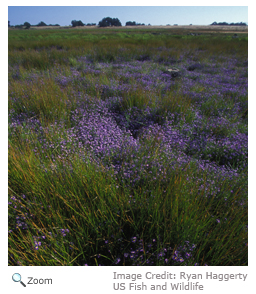 Vernal pools or ponds usually develop in the spring, when rain and melting snow fill in depressions in the ground. Vernal pools usually dry up as the weather gets warmer. Vernal pools or ponds usually develop in the spring, when rain and melting snow fill in depressions in the ground. Vernal pools usually dry up as the weather gets warmer.
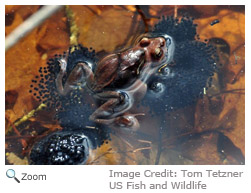 Vernal pools are often breeding grounds for frogs and other amphibians. Some organisms in vernal pools are adapted to survive through the dry season. Algae and protozoans dig into the mud and make a cyst or hard cover out of lime! This protects the organism until water fills the pond in the spring. Vernal pools are often breeding grounds for frogs and other amphibians. Some organisms in vernal pools are adapted to survive through the dry season. Algae and protozoans dig into the mud and make a cyst or hard cover out of lime! This protects the organism until water fills the pond in the spring.
Playas
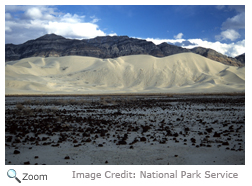 Playas are shallow, flat-bottomed desesrt basins. They get their water from precipitation and surface runoff. When there isn't enough rain they dry out. Playa is Spanish for " beach" or " shore."
|